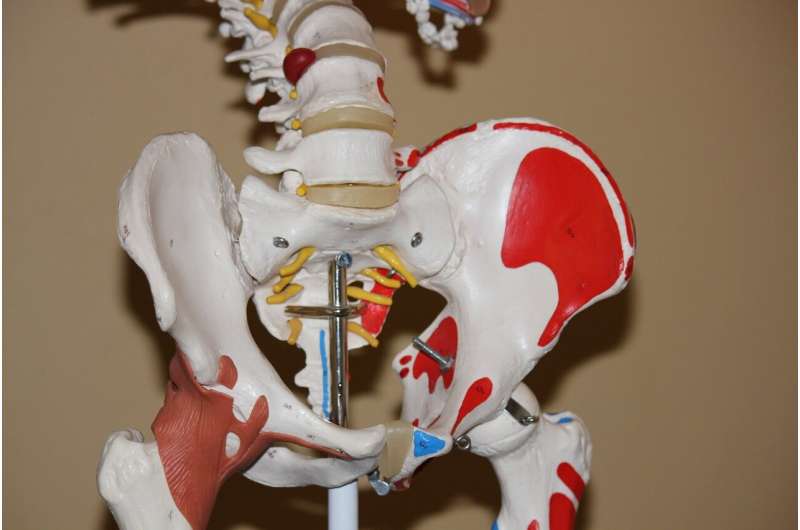May 29, 2024 report
This article has been reviewed according to Science X's editorial process and policies. Editors have highlighted the following attributes while ensuring the content's credibility:
fact-checked
peer-reviewed publication
trusted source
proofread
A protein-based risk score for hip-fracture using an aptamer-based proteomic platform

An international team of medical researchers has developed a protein-based risk score for hip fracture using an aptamer-based proteomic platform. In their study, published in the journal Nature Aging, the group analyzed data from the Cardiovascular Health Study and used their findings to develop their scoring system.
Hip fractures occur among people of all ages but are more common in older people. This is because many older people develop balance problems, making them more likely to fall—many older people also experience bone-mass density loss as well, making fractures more likely if they do fall.
Hip fractures in older people can be debilitating for long periods of time—some never recover. Because of this, medical researchers have been looking for ways to rate the likelihood of hip fracture as a way to identify those most at risk—such patients could then receive more attention as a means to prevent falls and the injuries that occur as a result.
In this new study, the research team developed a scoring system based on analysis of medical data captured by researchers working on the Cardiovascular Health Study.
Prior research has shown that markers associated with the degree of bone density loss circulate in blood—such blood plasma protein patterns have been associated with the risk of future hip fractures. The researchers looked for such patterns in 3,171 patients who had an average age of 74 years, including 456 who had already experienced at least one hip fracture.
By comparing the patterns they found among all of the patients with just those who had experienced hip fractures, they were able to create a protein-based risk score for older patients in general.
The research team also attempted to validate their scoring system using patient data obtained from people included in the Trøndelag Health Study, which included protein measurements for 342 patients who had experienced a hip fracture. They also analyzed another 50,876 general patients in the UK Biobank.
They found their risk scoring system to be a reliable means of predicting hip fractures in older people, and also in younger people with other medical problems. The team concludes that their scoring system is ready for testing in a clinical setting.
More information: Thomas R. Austin et al, A plasma protein-based risk score to predict hip fractures, Nature Aging (2024). DOI: 10.1038/s43587-024-00639-7
© 2024 Science X Network

















